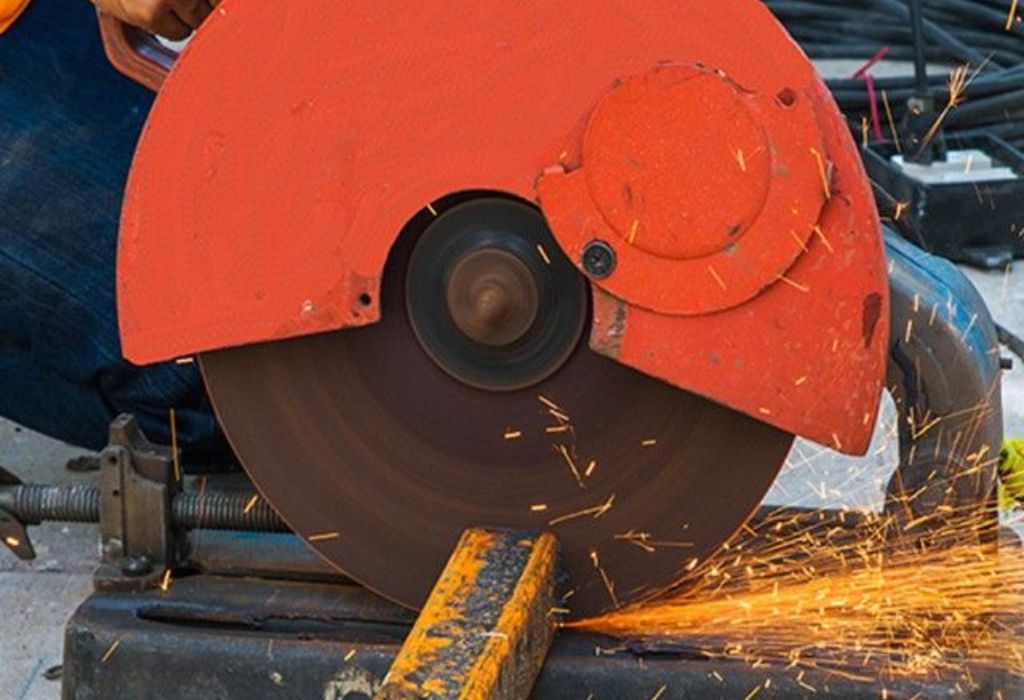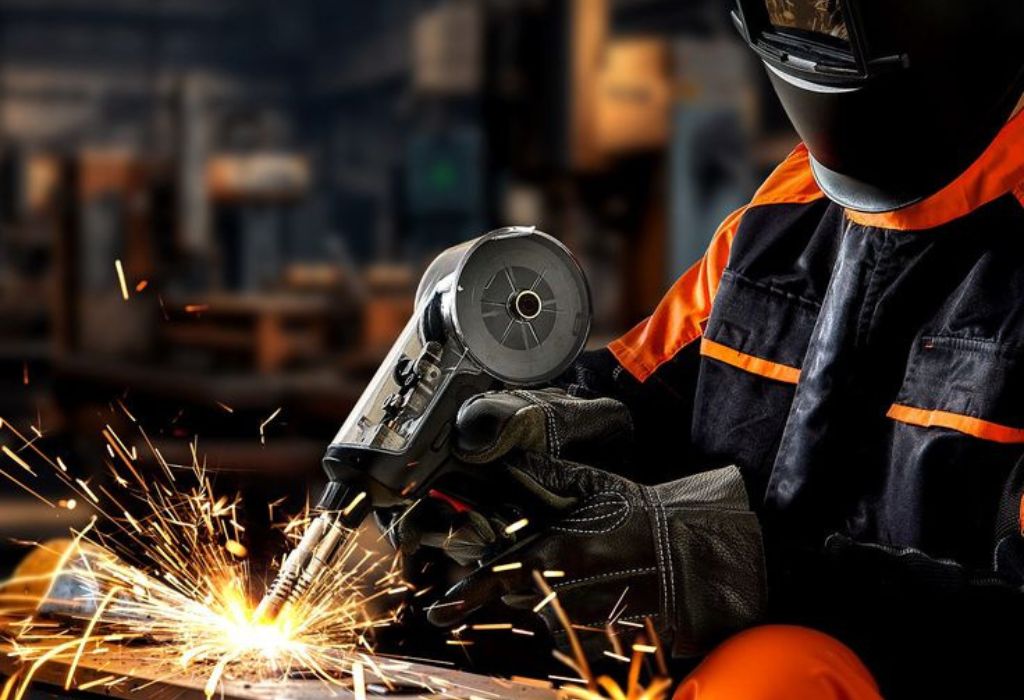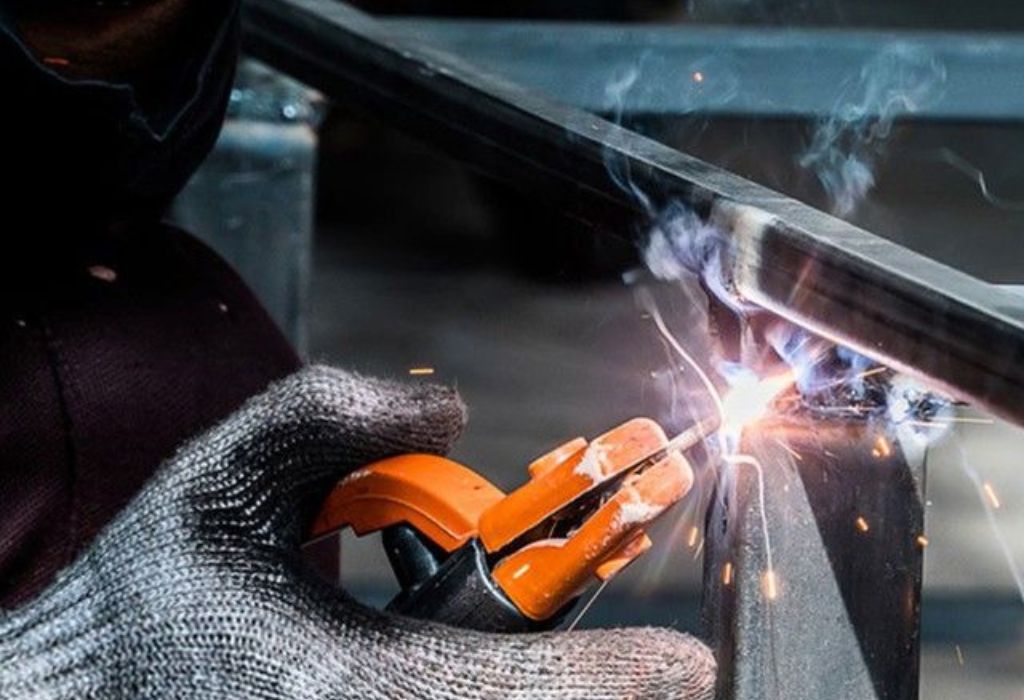The workshop hums with energy. Sparks fly as the welder’s torch lights up the metal, reflecting off the helmet’s visor. The air smells faintly of ozone and hot steel — a normal day for a welder.
But beneath this routine lies a silent question that few dare to ask out loud: can a welding machine kill you?
Many people think of welding as just a job involving heat and sparks, but the risks go far beyond burns. Every year, welders face dangers from electric shock, toxic fumes, explosions, and confined-space hazards — all of which can be deadly if safety steps are ignored.
According to the U.S. Bureau of Labor Statistics (BLS), there were 49 fatal injuries among welders, cutters, solderers, and brazers in 2019 alone (BLS).
Another report from Lincoln Electric states that electric shock remains the most common cause of fatal welding accidents, often occurring due to poor grounding or wet environments.
This article reveals the real risks behind the machine — and how to avoid becoming a statistic. You’ll learn what truly makes welding dangerous, how fatalities happen, and what every welder must do to stay alive on the job.
Can a Welding Machine Kill You? (The Quick Answer)

Yes — a welding machine can kill you if handled carelessly.
The danger doesn’t come from the flame alone but from electricity, fumes, explosions, and oxygen displacement.
A welder operates with voltage levels ranging from 20 to over 100 volts. That might sound low, but combined with high current and conductive metal surroundings, it’s enough to cause cardiac arrest or fatal burns.
Is electric shock from a welder lethal?
Yes. Contact with live circuits can stop the heart instantly or cause deadly secondary injuries like falls.
Can welding fumes kill you?
Yes. Inhaling gases like carbon monoxide or fumes containing hexavalent chromium can cause acute poisoning or long-term diseases.
Can a gas cylinder explosion be fatal?
Absolutely. A ruptured or overheated oxygen cylinder can turn into a high-speed projectile.
Are welding-related deaths common?
While rare compared to total workers, welding accounts for a significant portion of industrial fatalities worldwide.
Electric Shock — The Deadliest Welding Hazard
Electric shock is the number one cause of fatal welding accidents.
When a welder’s body becomes part of an electrical circuit, current flows through the chest — often resulting in cardiac arrest.
The risk is highest in wet, cramped, or poorly grounded environments. Damaged insulation, worn cables, or missing ground clamps make the situation even more dangerous.
Why is welding electricity so dangerous?
Because the current can exceed hundreds of amps, enough to disrupt heart rhythms even at low voltages.
Can moisture make a shock worse?
Yes. Sweat or water reduces skin resistance, increasing the current flow through the body.
How can you prevent shock?
Keep gloves dry, inspect leads daily, and avoid touching metal parts of the electrode holder. Always ground equipment correctly.
Do inverter welders reduce risk?
Modern inverter machines with Voltage Reduction Devices (VRD) help, but safe handling is still essential.
Are arc burns fatal?
Severe burns and flash exposure can cause skin damage or fires that lead to life-threatening injuries.
Fumes and Gases — The Silent Killers
While electricity kills quickly, toxic fumes and gases are the long-term assassins of the welding world.
Each time metal melts, it releases metal oxides and gases — including manganese, hexavalent chromium, carbon monoxide, and ozone.
In confined spaces, shielding gases like argon, helium, or CO₂ can displace oxygen, leading to suffocation in minutes.
Can fumes cause cancer?
Yes. Long-term exposure to hexavalent chromium (Cr(VI)) is a proven cause of lung cancer (OSHA).
Can gases kill instantly?
Yes. Argon and carbon dioxide are odorless — they can silently replace oxygen and cause unconsciousness or death.
What metals produce the most toxic fumes?
Stainless steel, galvanized steel, and aluminum coatings release hazardous compounds when welded.
How can you protect yourself?
Use local exhaust ventilation (LEV), proper respirators, and avoid welding in closed tanks or poorly ventilated areas.
Do welding masks protect from fumes?
Only partially — helmets protect from radiation and sparks, not airborne contaminants. Respiratory protection is essential.
Fire, Explosion, and Hot Work Disasters
A single spark from a welder can reach temperatures over 6,000°F (3,300°C) — easily enough to ignite flammable materials.
That’s why welding is classified as “hot work” under OSHA standards.
Every year, explosions occur in garages, workshops, and shipyards when workers weld near fuel vapors, paint fumes, or gas cylinders.
Can shielding gases cause explosions?
Inert gases don’t burn, but oxygen enrichment or nearby flammable materials can cause massive fire outbreaks.
What’s the main cause of welding fires?
Improper housekeeping — clutter, oil-soaked rags, or open fuel containers in the work zone.
Can welding tanks explode?
Yes. Oxygen or acetylene cylinders exposed to heat or impact can rupture violently.
How do you prevent fires?
Clear your workspace, keep a fire watch nearby, and always have extinguishers within reach.
What’s the OSHA rule for hot work?
Employers must issue a Hot Work Permit and ensure area clearance before welding in combustible environments.
Compressed Gas Cylinders — Potential Missiles

Oxygen and fuel cylinders are essential in welding, but they store thousands of pounds of pressure inside a steel container.
If a valve breaks or the cylinder falls, it can launch like a rocket — enough force to break walls or kill instantly.
Why are cylinders so dangerous?
Because oxygen accelerates combustion and fuels explosive reactions.
How do you store them safely?
Always keep cylinders upright, chained, and capped when not in use. Separate oxygen from fuel gases by at least 20 feet or a 5-foot barrier (OSHA 1910.253).
What should you never do with cylinders?
Never oil valves, roll cylinders, or use damaged hoses.
Can a slow leak be deadly?
Yes — oxygen enrichment or gas displacement can create invisible hazards in enclosed rooms.
How to detect leaks?
Apply a soap-water solution or use an approved detector — never use a flame to check.
Confined Spaces — Hidden Oxygen Death Traps
Welding in a tank, vessel, pit, or pipe adds another deadly layer of risk.
Toxic gases can accumulate, and oxygen levels can drop below 19.5% — causing unconsciousness within seconds.
Even a small job in a confined space can quickly turn lethal without air testing and ventilation.
Can argon suffocate you?
Yes. It’s heavier than air and displaces oxygen near the floor.
Do you need a confined-space permit?
Yes. OSHA requires testing, ventilation, and standby rescue personnel before entering confined areas.
Why do welders collapse without warning?
Oxygen deprivation causes dizziness and blackouts before any distress signal can be sent.
Can confined spaces explode?
Yes. Gas buildup from solvents or fuel vapors can ignite with a single arc.
What’s the safest practice?
Continuous air monitoring, forced ventilation, and standby attendants trained for rescue.
Long-Term Health Effects — The Slow Kill
Not every welding-related death happens instantly.
Prolonged exposure to fumes and UV radiation causes chronic lung disease, skin damage, nerve disorders, and cancer.
Can welding cause lung cancer?
Yes. Studies show welders face a 43% higher risk of lung cancer compared to non-welders (NIOSH).
What is manganese poisoning?
A neurological disorder caused by chronic exposure to manganese fumes, leading to tremors and memory loss.
Does TIG welding produce fewer fumes?
Slightly, but still releases metal vapors and ozone — ventilation is always required.
Are respirators mandatory?
Yes, when exposure exceeds safe limits or welding occurs in enclosed areas.
Can welding affect eyesight?
UV radiation causes arc eye — a painful corneal burn that can cause vision loss.
How Many Welders Die Each Year? (The Hard Numbers)
While welding fatalities are not daily news, they remain a consistent occupational hazard.
The Bureau of Labor Statistics reports an average of 40–50 deaths per year in the U.S. due to welding-related accidents.
Most involve electric shock, explosions, or toxic gas exposure.
Globally, the rate is even higher, especially in regions with limited safety training or outdated equipment.
Are welding deaths preventable?
Nearly all are. Most fatal incidents involve skipped safety checks or missing protective gear.
Which industries see the most fatalities?
Shipbuilding, construction, and oil-and-gas maintenance jobs have the highest risk.
Do home welders face the same risk?
Yes — especially from improper grounding, poor ventilation, and no PPE.
Is underwater welding the most dangerous?
Yes. Underwater welders face additional risks like drowning, explosion, and electric shock under pressure.
Safety Rules That Save Lives

Welding safely isn’t complicated — but it requires discipline.
Following standard procedures drastically reduces the chance of fatal accidents.
1. Electrical Safety
Inspect cables, replace damaged insulation, and ensure a proper ground.
Avoid working in wet clothing or standing on metal surfaces.
2. Fume and Gas Control
Use exhaust hoods, portable ventilation, and fume-extraction torches.
Install CO and O₂ monitors in enclosed areas.
3. Fire Prevention
Remove flammable materials, assign a fire watch, and keep extinguishers close.
Follow Hot Work Permit procedures before cutting or welding.
4. Cylinder Safety
Store cylinders upright, capped, and separated by type.
Never exceed recommended pressures or mix oxygen with grease or oil.
5. Personal Protective Equipment (PPE)
Use an auto-darkening helmet (shade 10–14), leather gloves, flame-resistant jackets, and steel-toe boots.
Ensure respirator fit testing if working with hazardous metals.
What’s the single most important rule?
Never weld without a ground check and ventilation — most fatalities involve missing one of these.
Can PPE alone save your life?
Only if used correctly — improper gear is as dangerous as no gear.
How often should equipment be inspected?
Daily visual checks and formal inspections every month.
Does training matter?
Yes. Proper safety training is proven to cut accident rates by over 50% (OSHA).
Future Safety Trends in Welding
Technology is making welding safer every year.
Modern inverter machines now feature Voltage Reduction Devices (VRD) and auto shut-off sensors that lower idle voltage.
Smart helmets monitor UV exposure, and AI-assisted systems automatically adjust current for optimal arc stability.
Robotic and remote welding units are also reducing human exposure to high-risk environments.
Do inverters eliminate electric shock?
They reduce it, but safe practices are still essential.
Will automation replace human welders?
No — it supplements human skill in dangerous or repetitive tasks.
Can smart PPE detect danger?
Yes, new sensors can monitor oxygen, temperature, and fume levels in real time.
Will safety gear become mandatory everywhere?
Global standards are tightening — most industrial sites now require certified PPE before entering a hot-work zone.
Conclusion
So, can a welding machine kill you?
Yes — but only if you ignore safety.
The same power that melts metal can also stop a heart, ignite fuel, or silently poison lungs. But every fatal risk has a solution — from proper grounding and PPE to ventilation and training.
Welding is one of the world’s most vital trades, building everything from ships to skyscrapers. It’s also one of the few jobs where discipline truly means survival.
Respect your tools. Inspect your cables. Keep your air clean.
Because when it comes to welding — knowledge and caution keep you alive.

I’m Darrell Julian, the founder, lead writer, and hands-on welding enthusiast behind ArcWeldingPro.com. With more than 15 years of real-world welding experience, I created this platform to share what I’ve learned in the field, in the shop, and in the heat of the arc.


